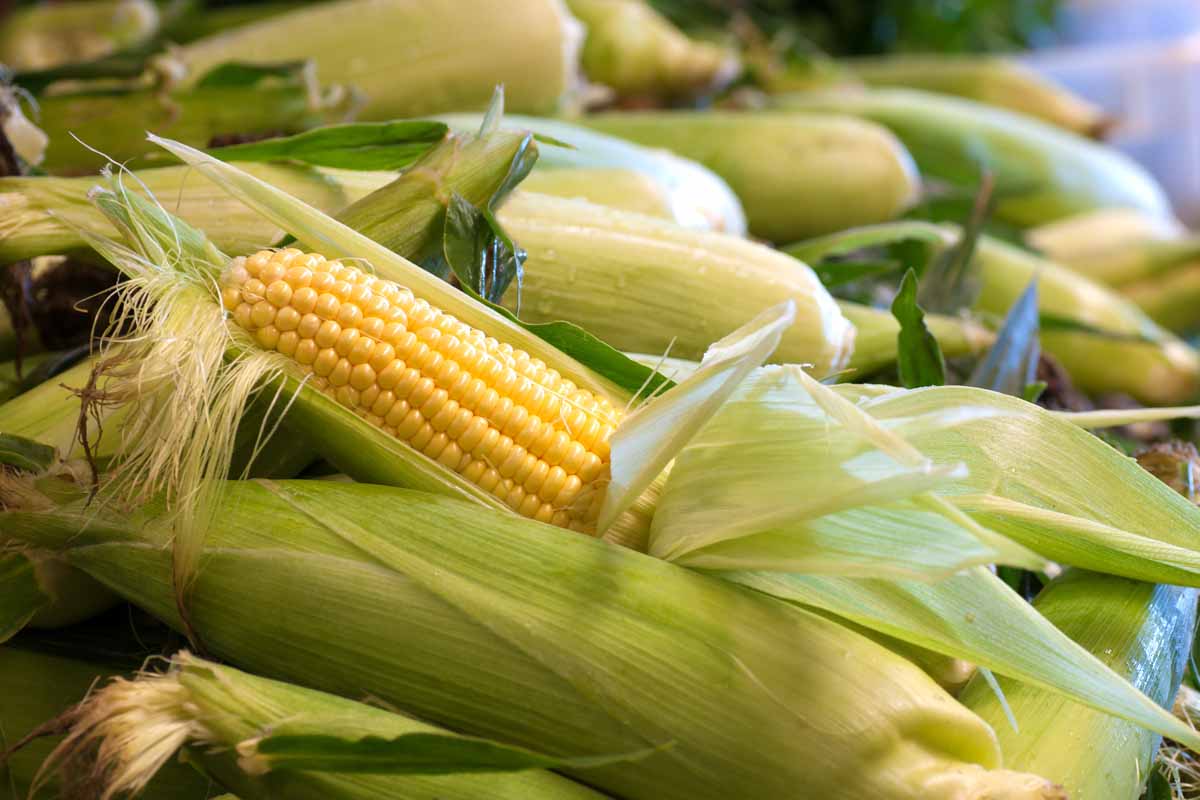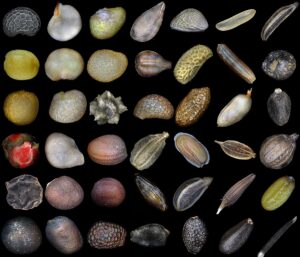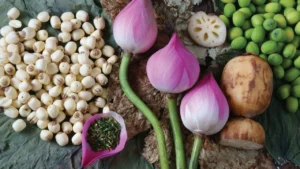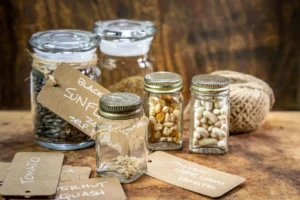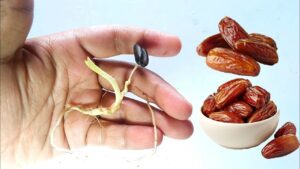How to Grow Sweet Corn from Seeds: 800 Kernels Per Plant!
There’s nothing quite like biting into a freshly harvested ear of sweet corn, steam still rising as butter melts into the perfectly plump kernels. Growing your own sweet corn transforms this summer staple from a grocery store commodity into a backyard treasure—one that can yield an impressive 800 kernels per plant when done right. This comprehensive guide will walk you through everything you need to know about growing sweet corn from seeds to achieve maximum yield and flavor in your home garden.
Understanding Sweet Corn Varieties and Their Potential
Sweet corn (Zea mays var. saccharata) differs significantly from field corn and ornamental corn varieties. While all corn types share similar growing requirements, sweet corn has been specifically bred for higher sugar content and tenderness, making it ideal for fresh eating. The USDA Agricultural Research Service has extensively documented various sweet corn varieties and their growth patterns, information you can review at USDA ARS Corn Research.
Before planting your first sweet corn seed, it’s essential to understand the different varieties available and their specific characteristics. Sweet corn varieties are typically classified by their sugar content and conversion rates:
Standard Sugary (SU) Varieties
These traditional varieties convert sugar to starch quickly after harvest. They offer the classic “old-fashioned” corn flavor but require immediate consumption or preservation after picking. Examples include ‘Golden Bantam’ and ‘Silver Queen’. While these varieties typically produce 400-600 kernels per plant, with optimal conditions and the techniques we’ll discuss, you can push that number closer to 800.
Sugar Enhanced (SE) Varieties
These varieties contain higher sugar content than standard types and retain their sweetness longer after harvest. The kernels are tender and easy to digest, making them excellent for fresh eating. Examples include ‘Bodacious’ and ‘Sugar Buns’. SE varieties typically yield 500-700 kernels per plant under standard growing conditions.
Supersweet (SH2) Varieties
These varieties contain the highest sugar levels—up to three times more than standard varieties—and convert sugar to starch very slowly, allowing them to maintain sweetness for up to two weeks after harvest if refrigerated properly. Examples include ‘Honey ‘n Pearl’ and ‘Super Sweet 100’. SH2 varieties commonly produce 600-800 kernels per plant and are your best bet for achieving the maximum 800-kernel goal.
Synergistic (SY) Varieties
These newer hybrids combine the best qualities of SE and SH2 types, offering excellent flavor, tenderness, and longer shelf life. Examples include ‘Serendipity’ and ‘Providence’. These varieties typically yield 550-750 kernels per plant under optimal conditions.
Understanding Kernel Production
A typical ear of sweet corn produces approximately 400-600 kernels arranged in 16-20 rows with 30-40 kernels per row. To reach the ambitious goal of 800 kernels per plant, you’ll need to:
- Select high-yielding varieties
- Maximize ear size through proper nutrition
- Encourage plants to produce multiple ears (typically 1-2 but sometimes up to 3 ears per stalk)
- Implement advanced growing techniques to optimize kernel development
Let’s explore how the right combination of variety selection, soil preparation, planting methods, and ongoing care can help you achieve these impressive yields.
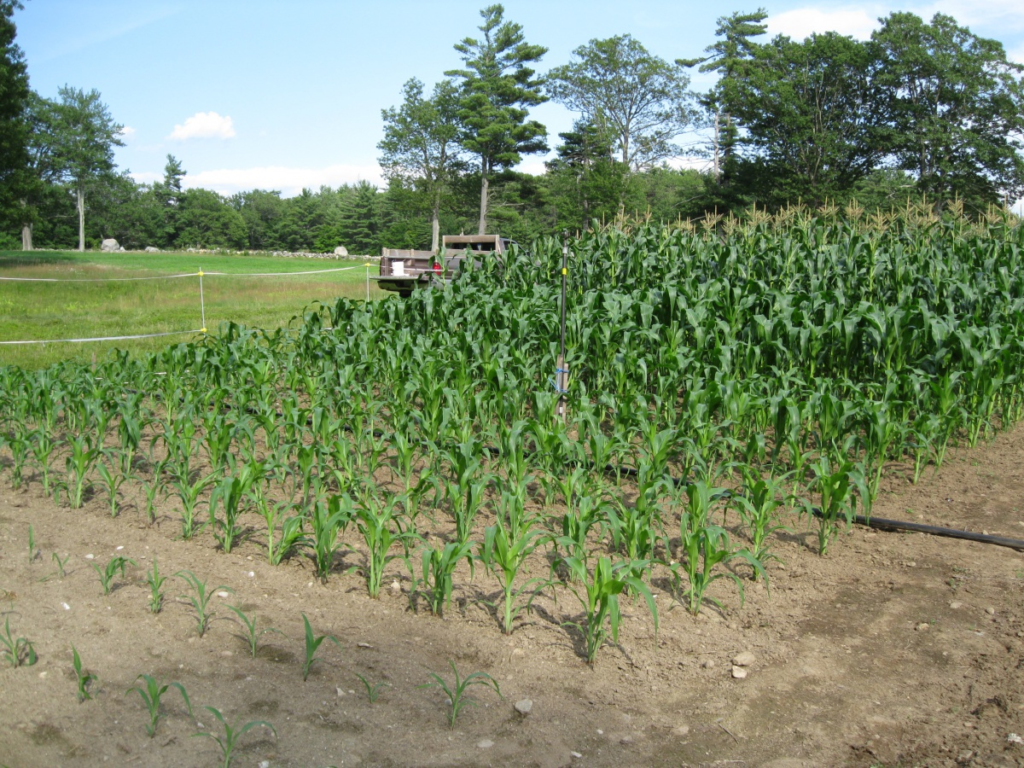
Planning for Success: Site Selection and Preparation
Selecting the Ideal Growing Location
Sweet corn thrives in full sun and requires a minimum of 6-8 hours of direct sunlight daily. For maximum kernel production, aim for locations receiving 8-10 hours of unfiltered sunlight. According to research from Cornell University’s Department of Horticulture, corn yield increases approximately 10-15% with each additional hour of full sun exposure beyond the 6-hour minimum.
Beyond sunlight, consider these factors when selecting your corn-growing site:
- Wind protection: Corn grows tall (6-10 feet) and can be vulnerable to strong winds. Consider planting along fence lines or using natural windbreaks if your area experiences frequent strong breezes.
- Water access: Corn requires consistent moisture, especially during tasseling and ear formation. Choose a location within easy reach of irrigation.
- Previous crops: Avoid planting corn where corn, sorghum, or sudangrass grew in the previous year to reduce pest and disease pressure.
- Isolation: For optimal pollination (critical for fully developed ears with 800+ kernels), plant corn in blocks rather than long rows.
Soil Requirements for Maximum Yield
Sweet corn is a heavy feeder and requires nutrient-rich, well-draining soil with a pH between 5.8 and 6.8 for optimal growth and productivity. The University of Minnesota Extension recommends a slightly acidic soil (pH 6.0-6.5) for maximum nutrient availability. You can check current recommendations at USDA NRCS Soil Health.
Here’s a comprehensive breakdown of soil requirements for achieving maximum kernel production:
| Soil Component | Ideal Range | Impact on Kernel Production |
|---|---|---|
| pH | 5.8-6.8 | Affects nutrient availability; outside this range, nutrients become less accessible |
| Organic Matter | 3-5% | Provides slow-release nutrients, improves water retention, and supports beneficial soil life |
| Nitrogen (N) | 120-160 lbs/acre | Essential for vegetative growth; deficiency reduces plant size and ear development |
| Phosphorus (P) | 50-80 lbs/acre | Critical for root development and energy transfer; deficiency reduces kernel count |
| Potassium (K) | 80-120 lbs/acre | Regulates water usage and disease resistance; deficiency reduces stalk strength and ear fill |
| Calcium (Ca) | 1000-2000 ppm | Supports cell wall development; deficiency leads to smaller ears |
| Magnesium (Mg) | 100-250 ppm | Essential for chlorophyll production; deficiency reduces photosynthesis and kernel development |
Before planting, conduct a soil test through your local agricultural extension office to determine your soil’s current nutrient levels and pH. Based on the results, amend your soil accordingly:
- For acidic soils (pH below 5.8): Add lime according to soil test recommendations.
- For alkaline soils (pH above 6.8): Add agricultural sulfur or naturally acidic organic matter like pine needles or coffee grounds.
- For low organic matter: Incorporate 2-4 inches of compost, well-rotted manure, or leaf mold.
- For nutrient deficiencies: Add specific amendments as recommended by your soil test.
Advanced Soil Preparation Techniques
To push your sweet corn plants to produce 800 kernels each, consider these advanced soil preparation techniques:
- Double-digging: This technique involves removing the topsoil, loosening the subsoil, and returning the topsoil to create a deeply aerated growing medium. Double-digging can increase root penetration by up to 50%, allowing plants to access more nutrients and water.
- Cover cropping: Planting cover crops like clover, vetch, or rye in the fall before your corn season can add organic matter and fix nitrogen in the soil. University of California Cooperative Extension research shows that leguminous cover crops can provide 50-150 pounds of nitrogen per acre, reducing the need for synthetic fertilizers.
- Biochar incorporation: Adding biochar to your corn plot can improve soil structure, water retention, and microbial activity. Research from the USDA Agricultural Research Service indicates that biochar can increase corn yields by 10-15% in some soil types.
- Mycorrhizal inoculation: These beneficial fungi form symbiotic relationships with corn roots, effectively extending the root system and improving nutrient uptake. Studies from the University of Illinois show that mycorrhizal associations can increase phosphorus uptake by 25-30% in corn plants.
By meticulously preparing your soil, you’re laying the foundation for healthy plants capable of producing the maximum number of kernels per ear—and potentially increasing the number of ears per plant.
Seed Selection and Pre-Planting Strategies
Choosing High-Yielding Varieties
Selecting the right sweet corn variety is perhaps the most critical decision for achieving the 800-kernel goal. Here’s a comparison of some top-performing varieties known for high kernel counts:
| Variety | Type | Days to Maturity | Average Kernels per Ear | Special Characteristics | Best Growing Region |
|---|---|---|---|---|---|
| Honey & Pearl | SH2 | 76-78 | 650-800 | Bicolor, excellent tip fill, up to 2 ears per stalk | Midwest, Northeast |
| Silver King | SE | 82-84 | 600-750 | White, large ears (8-9″), good cold soil tolerance | Northern states, high elevations |
| Serendipity | SY | 70-75 | 600-750 | Bicolor, exceptional flavor, disease resistant | All US regions except extreme South |
| Jubilee | SU | 83-85 | 600-700 | Yellow, uniform ears, heat tolerant | Southern and Central states |
| Peaches & Cream | SE | 70-75 | 550-700 | Bicolor, reliable producer, drought tolerant | Wide adaptation across US |
| Super Sweet 100 | SH2 | 80-85 | 700-850 | Yellow, very high sugar content, holds sweetness well | Warm regions with long seasons |
| Ambrosia | SE | 75 | 600-750 | Bicolor, excellent flavor, good disease resistance | Northeast, Midwest |
| Golden Bantam | SU | 70-75 | 500-650 | Yellow, heirloom variety, excellent for northern gardens | Northern states, short seasons |
When selecting varieties for maximum kernel production, look for these traits:
- Long ears (8+ inches) with potential for 18-20 rows of kernels
- Good tip fill characteristics (kernels develop fully to the tip of the ear)
- Multiple ear production capability (varieties that reliably produce 2+ ears per stalk)
- Adaptability to your specific growing region and climate
Seed Treatment and Germination Enhancement
Sweet corn seed germination can be enhanced through several pre-planting treatments:
- Seed soaking: Soaking seeds in room temperature water for 8-12 hours before planting can speed germination by 1-3 days. This gives your corn a head start and can increase germination rates by 15-20%.
- Temperature priming: For cold soil conditions, pre-germinating seeds between moist paper towels at 75°F (24°C) until they just begin to sprout can significantly improve establishment rates.
- Seed treatment products: Commercial products containing beneficial microorganisms, growth stimulants, or nutrient packages can enhance germination and early growth. The USDA Agricultural Marketing Service provides information about organic seed treatments at USDA AMS National Organic Program.
- Fungicide treatment: In areas with high soil disease pressure, seeds treated with approved fungicides can have improved survival rates. Always follow label instructions and safety guidelines.
- Magnetic or electrical treatment: Some research suggests that exposing seeds to magnetic fields or mild electrical currents can improve germination and vigor, though results are mixed and this remains experimental.
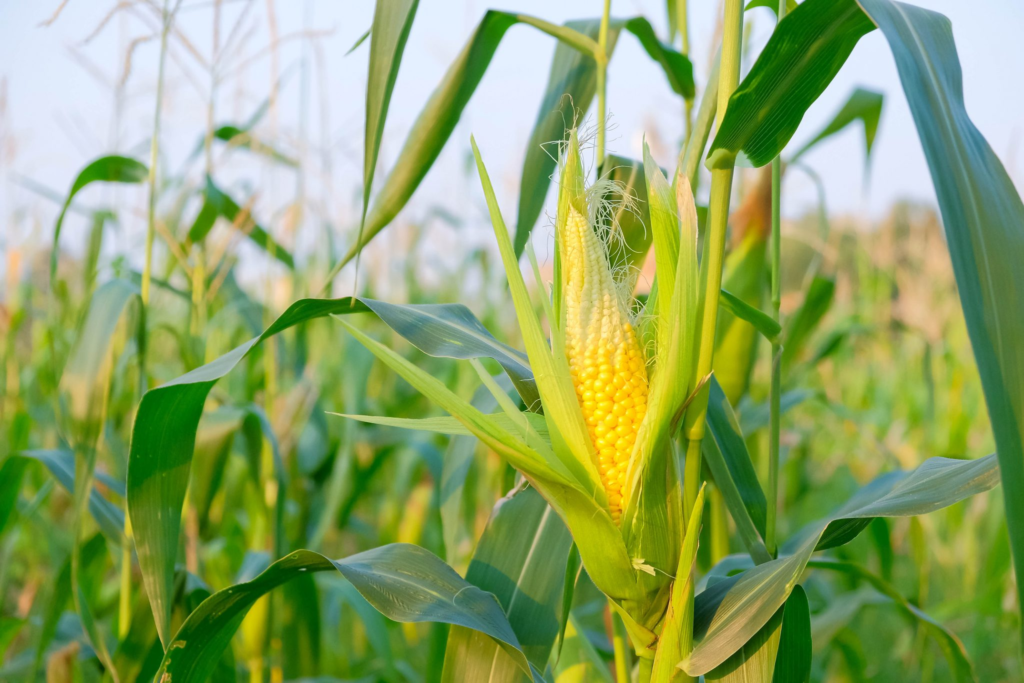
By selecting high-quality seed and using appropriate pre-planting treatments, you set the stage for vigorous growth and maximum kernel production from the very beginning of your corn’s life cycle.
Planting Techniques for Maximum Yield
Optimal Planting Times and Temperatures
Sweet corn is a warm-season crop that requires soil temperatures of at least 55°F (13°C) for germination, though 65-70°F (18-21°C) is ideal for quick establishment. Planting too early in cold soil leads to poor germination, susceptibility to rot, and stunted early growth—all factors that can reduce your final kernel count.
Across the US, planting times vary considerably:
- Southern states: Mid-March to early April for first planting
- Central states: Late April to mid-May
- Northern states: Mid-May to early June
- Coastal areas: Follow regional guidelines, as maritime climates have unique patterns
For a continuous harvest, consider succession planting by starting new blocks every 10-14 days, but be sure each planting has time to mature before your region’s first frost date.
Spacing and Planting Patterns for Maximum Pollination
Corn is wind-pollinated, making proper spacing and planting patterns essential for achieving fully developed ears with maximum kernel count. Traditional row spacing often results in suboptimal pollination, especially in home gardens.
For maximum kernel development, consider these advanced planting strategies:
- Block planting: Plant corn in blocks of at least 4 rows by 4 rows rather than long single rows. This significantly improves pollination, allowing pollen from tassels to more effectively reach the silks.
- Intensive spacing: While commercial growers might space corn 30-36 inches between rows and 8-12 inches between plants, research from the University of New Hampshire Cooperative Extension shows that closer spacing can increase overall yield in home gardens:
- 24 inches between rows
- 8-10 inches between plants
- This creates a “living mulch” effect where plants shade out weeds and create a beneficial microclimate
- Three Sisters method: This Native American companion planting technique involves growing corn, beans, and squash together. The beans fix nitrogen for the corn, while the squash provides living mulch. Research from Cornell University indicates this system can increase corn yield by 20% while reducing water needs.
- Double-row planting: Create paired rows 8-10 inches apart with walking paths of 30-36 inches between pairs. This maintains good air circulation while maximizing pollination efficiency.
- Circular planting: For small garden spaces, consider circular corn plantings with 10-12 plants in a circle about 2 feet in diameter. This creates excellent pollination conditions in minimal space.
Planting Depth and Technique
Sweet corn seeds should be planted at a depth of 1-1.5 inches in heavy soils and 1.5-2 inches in lighter, sandy soils. In drought-prone areas or for late-season plantings in hot weather, you can plant up to 2.5 inches deep to access more stable soil moisture.
For maximum germination rates and early vigor:
- Plant seeds with the pointed end facing down and the flat end up
- Ensure good seed-to-soil contact by gently firming the soil after planting
- Water immediately after planting to initiate the germination process
- Consider applying corn-safe pre-emergent herbicides to reduce weed competition during the critical establishment phase
Nurturing Growth: Watering, Feeding, and Maintenance
Water Management for Optimal Kernel Development
Sweet corn requires 1-1.5 inches of water per week during the growing season, with needs increasing dramatically during critical growth stages. To achieve the goal of 800 kernels per plant, pay special attention to these high-demand periods:
| Growth Stage | Water Requirement | Impact on Kernel Production | Watering Strategy |
|---|---|---|---|
| Germination to 4-leaf stage | 1 inch per week | Establishes root system and early growth potential | Frequent, shallow watering |
| Vegetative growth (5-leaf to tasseling) | 1-1.5 inches per week | Builds plant structure and energy reserves | Deep, consistent watering |
| Tasseling and silking | 1.5-2 inches per week | Critical for pollination and kernel initiation; water stress during this period can reduce kernel count by 30-50% | Daily watering in hot weather; never allow to dry out |
| Kernel development | 1.5-2 inches per week | Determines kernel size and fillout; inconsistent moisture leads to gaps in kernel rows | Consistent, deep watering |
| Maturation | 1 inch per week | Affects final kernel quality and sweetness | Gradual reduction as harvest approaches |
Irrigation methods also impact kernel production:
- Drip irrigation is most efficient and keeps foliage dry, reducing disease pressure
- Soaker hoses work well for home gardens and provide even moisture
- Overhead sprinklers should be used early in the day to allow foliage to dry before evening
- Flood irrigation is less ideal due to uneven distribution and potential for soil compaction
The University of California Division of Agriculture and Natural Resources offers detailed information on efficient irrigation practices at UCANR Drought Management for Corn Production.
Advanced Fertilization Strategies
Sweet corn’s nutritional needs change throughout the growing season. To produce plants capable of yielding 800 kernels, tailor your fertilization program to each growth stage:
- Pre-planting: Based on soil test results, incorporate balanced fertilizer or compost. A typical application might include:
- 3-4 lbs of 10-10-10 per 100 square feet, or
- 1-2 inches of compost worked into the top 6-8 inches of soil
- Early growth (2-6 leaves): Apply a nitrogen-focused sidedressing when plants are 8-12 inches tall:
- 1/2 cup of balanced fertilizer per 10 feet of row, or
- Diluted fish emulsion applied weekly until tasseling begins
- Pre-tasseling: Apply a second nitrogen sidedressing when plants are knee-high:
- 1/3 lb of high-nitrogen fertilizer (such as 21-0-0) per 100 square feet, or
- Compost tea applied weekly through the irrigation system
- Silking and ear development: Apply a potassium-rich fertilizer to support kernel development:
- Blood meal or fish emulsion for nitrogen
- Bone meal for phosphorus
- Wood ash or greensand for potassium
- Micronutrient support: Foliar sprays containing zinc, manganese, and boron can be particularly beneficial during the reproductive phase. Research from Purdue University shows that zinc deficiency can reduce kernel count by 15-25%.
For organic growers, consider these natural fertilizer options:
- Alfalfa meal: 3% nitrogen, releases nutrients slowly
- Fish meal: 10% nitrogen, 6% phosphorus, quick release
- Feather meal: 12% nitrogen, slow release
- Rock phosphate: 20-30% phosphorus, very slow release
- Greensand: 7% potassium, slow release
- Compost tea: Balanced nutrients and beneficial microorganisms
Pest Management for Maximum Production
Common corn pests can significantly reduce both ear quality and kernel count. Here’s how to address the most problematic insects:
| Pest | Damage | Control Methods | Prevention Strategies |
|---|---|---|---|
| Corn earworm | Feeds on kernels at ear tips | Bt applications at early silk stage; mineral oil drops on silk; beneficial nematodes | Timed planting to avoid peak moth activity; resistant varieties |
| European corn borer | Tunnels through stalks and ears | Bt sprays; parasitic wasps (Trichogramma); proper crop rotation | Early planting or late planting depending on region; removing crop residue |
| Corn rootworm | Larvae damage roots; adults eat silks | Beneficial nematodes; crop rotation; soil insecticides if severe | Three-year rotation away from corn; cover crops; encouragement of ground beetles |
| Aphids | Suck plant sap; vector diseases | Insecticidal soap; lady beetles; lacewings | Avoiding excess nitrogen; silver reflective mulch; companion planting with repellent herbs |
| Japanese beetles | Feed on silks, disrupting pollination | Row covers during silking; hand picking; pheromone traps away from corn | Milky spore in soil for long-term control; timing plantings to avoid peak beetle activity |
For comprehensive pest management strategies for corn, visit the USDA Integrated Pest Management Program website.
Disease Prevention and Management
Disease pressure can significantly reduce kernel count and quality. Here are strategies for managing common sweet corn diseases:
- Seed treatments: Use treated seed or organic alternatives to prevent seedling diseases.
- Crop rotation: Avoid planting corn in the same location more frequently than every 3-4 years.
- Resistant varieties: Select disease-resistant varieties appropriate for your region.
- Air circulation: Proper spacing allows faster drying of foliage, reducing fungal disease pressure.
- Fungal disease management: For common diseases like northern corn leaf blight, southern corn leaf blight, and rust:
- Apply approved fungicides preventatively in high-pressure areas
- Remove and destroy infected plant material
- Use drip irrigation to keep foliage dry
- Viral disease prevention: For maize dwarf mosaic virus and other viral diseases:
- Control aphid vectors with insecticidal soaps or appropriate insecticides
- Remove weed hosts around the garden
- Use reflective mulches to repel aphids
Advanced Techniques for Maximizing Kernel Count
Hand Pollination Methods
While corn is naturally wind-pollinated, hand pollination can significantly increase kernel count, especially in small gardens or during periods of unfavorable weather. Studies from Ohio State University Extension show that hand pollination can increase kernel set by 15-30% compared to wind pollination alone.

To hand pollinate corn:
- Morning collection: When tassels are shedding pollen (typically mid-morning), carefully shake or tap them over a paper bag or bucket to collect pollen.
- Multiple plants: Collect pollen from multiple plants to ensure genetic diversity and complete fertilization.
- Application: Apply collected pollen to the silks using a small paintbrush, making sure to cover all exposed silks. Alternatively, carefully place the tassel directly against the silks and shake.
- Repeat process: For maximum kernel development, repeat hand pollination for 2-3 consecutive days as new silks emerge.
- Protection: After hand pollination, consider covering ears with small paper bags to prevent pest damage to silks.
Growth Stimulation Techniques
Several advanced techniques can stimulate corn plants to produce larger ears with more kernels:
- Foliar feeding: Applying diluted seaweed extract, compost tea, or specific micronutrient solutions directly to leaves can boost plant metabolism and kernel development. Apply these solutions early in the morning or late evening when stomata are open.
- Growth regulators: Certain plant growth regulators, when applied at specific growth stages, can increase ear size and kernel set. These should be used cautiously and according to label instructions.
- Silicon supplementation: Research from the University of Massachusetts shows that silicon supplementation can increase corn’s resistance to environmental stresses and potentially increase yields by 5-10%.
- Microbial inoculants: Products containing beneficial bacteria and fungi can enhance nutrient uptake and plant vigor. Look for inoculants containing Azospirillum, Bacillus, and mycorrhizal fungi species known to benefit corn.
- Strategic pruning: Removing lower leaves that receive minimal sunlight can redirect energy to ear development. This technique should be used cautiously and only after the silking stage.
Environmental Manipulation for Higher Yields
Creating optimal growing conditions through environmental manipulation can significantly increase kernel production:
- Reflective mulch: Using silver or white reflective mulch between rows can increase light reflection to lower leaves, potentially increasing photosynthesis and yield by 7-12%.
- Windbreaks: Temporary windbreaks during tasseling and silking can improve pollination efficiency, especially in windy areas.
- Temperature management: In cooler climates, black plastic mulch can increase soil temperature and extend the growing season.
- CO2 enrichment: For small plots, temporary hoop structures with CO2 enrichment during key growth phases can dramatically increase yields, though this is more practical for dedicated gardeners.
- Shade management: Strategic placement of corn blocks to receive morning sun and afternoon partial shade in extremely hot climates can reduce heat stress during pollination.
Harvesting for Peak Sweetness and Nutrition
Determining the Perfect Harvest Time
Harvesting sweet corn at the right time is crucial for both flavor and maximum kernel development. The challenge is that sweet corn reaches peak quality for only 1-3 days, depending on the variety and weather conditions.
Here’s how to determine the perfect harvest time:
- Days to maturity: Start checking ears a few days before the expected maturity date listed on the seed packet.
- Silk appearance: Look for dried, brown silk ends while the husks are still green. The silk should be brown and dry at the exposed end, but still somewhat moist where it attaches to the ear.
- Kernel development: Gently pull back a small section of husk and pierce a kernel with your fingernail. The ideal harvest stage is when:
- The liquid is milky white (not clear or watery)
- The kernel is plump and fills the space completely
- The kernel surface is firm but not tough or doughy
- Ear feel: Mature ears feel solid and full when grasped, with kernels filling out to the tip.
- Time of day: Harvest in the morning when sugar content is highest. Research from the University of Illinois shows that sugar content can decrease by 25% by late afternoon on hot days, especially in SU varieties.
Proper Harvesting Technique
To preserve maximum quality and sweetness when harvesting:
- Grasp the ear firmly
- Pull downward while twisting slightly
- Harvest all ears at optimum maturity from a given planting at once
- Move harvested ears to shade or refrigeration immediately
- Cool ears to 35-40°F (1-4°C) as quickly as possible to preserve sweetness, especially for SU varieties
Post-Harvest Handling and Storage
Sweet corn quality deteriorates rapidly after harvest as sugars convert to starch. To maintain peak flavor and nutrition:
- Immediate cooling: Reduce ear temperature to 32°F (0°C) as quickly as possible. Immersion in ice water for 10 minutes can help.
- Storage conditions:
- Standard (SU) varieties: Use within 1-2 days even when refrigerated
- Sugar Enhanced (SE) varieties: Will maintain quality for 2-4 days when refrigerated
- Supersweet (SH2) varieties: Can maintain quality for 7-10 days when properly refrigerated
- Humidity control: Store corn in perforated plastic bags in the refrigerator to maintain 95% humidity while allowing some air circulation.
- Position: Store ears with husks intact and arrange them so that the silk end is elevated to reduce moisture accumulation and potential mold growth.
Preserving Your Abundant Harvest
With 800 kernels per plant, your sweet corn harvest may exceed your immediate consumption capacity. Proper preservation techniques allow you to enjoy your homegrown sweet corn year-round.
Freezing Methods
Freezing is the preferred preservation method for sweet corn as it best maintains flavor and texture:
- Blanching method:
- Husk ears and remove silk
- Blanch whole ears in boiling water (4 minutes for average ears, 6 minutes for large ears)
- Cool immediately in ice water for the same amount of time
- Cut kernels from cob (a bundt pan works well to hold the ear while cutting)
- Package in freezer bags or containers, removing as much air as possible
- Freeze at 0°F (-18°C) or below
- Microwave blanching:
- Place 2-3 husked ears in a microwave-safe dish with 2 tablespoons of water
- Cover and microwave on high for 4-6 minutes depending on ear size
- Cool immediately in ice water
- Cut kernels from cob and package as above
Canning Sweet Corn
Canning requires careful attention to food safety due to corn’s low acidity:
- Preparation:
- Husk corn and remove silk
- Cut kernels from cob at about 2/3 their depth
- Add 1 cup boiling water to each quart of cut corn and heat to boiling
- Pressure canning (the only safe method for corn):
- Pack hot corn and liquid in hot jars, leaving 1-inch headspace
- Add 1/2 teaspoon salt per pint if desired
- Process in a pressure canner at 10 pounds pressure (weighted gauge) or 11 pounds pressure (dial gauge) for 55 minutes for pints, 85 minutes for quarts
Visit the USDA Complete Guide to Home Canning for detailed, safe canning instructions.
Dehydrating Sweet Corn
Dehydration creates a versatile product that requires no refrigeration:
- Blanch corn as for freezing
- Cut kernels from cob
- Spread in a single layer on dehydrator trays
- Dry at 135-140°F (57-60°C) until kernels are hard and shatter when struck with a hard object (8-12 hours depending on humidity)
- Package in airtight containers
- Rehydrate by soaking in hot water for 30 minutes before using in recipes
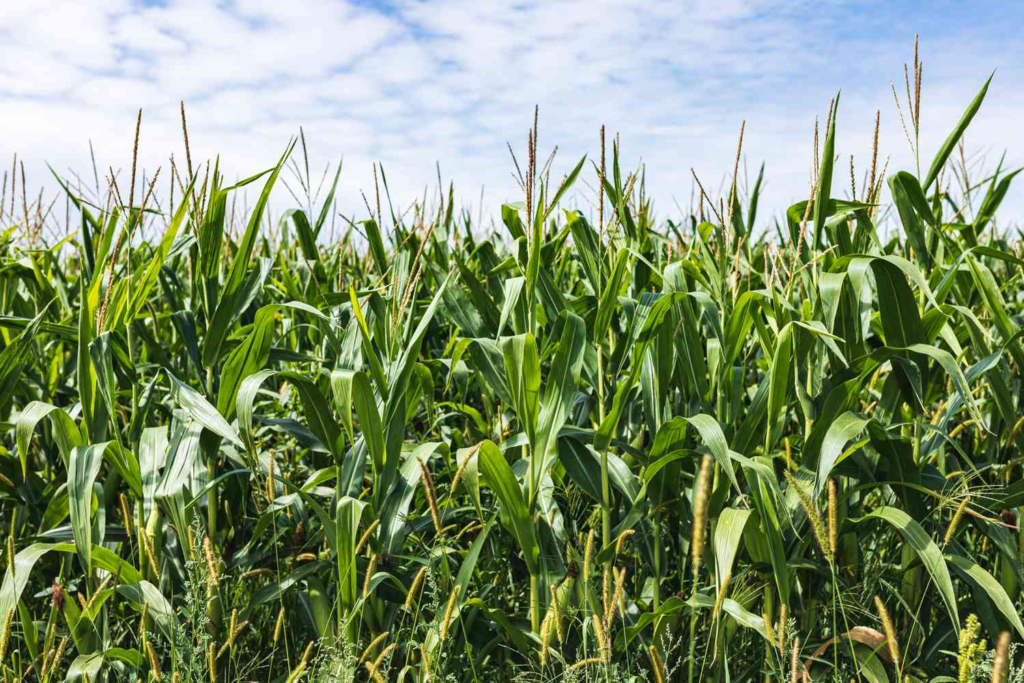
Seed Saving and Developing Your Own Varieties
One of the most rewarding aspects of growing sweet corn is the potential to save seeds and develop varieties especially adapted to your growing conditions and taste preferences.
Understanding Corn Pollination and Genetics
Sweet corn is open-pollinated, meaning pollen travels by wind from tassels to silks. This presents both challenges and opportunities for seed savers:
- Isolation requirements: Sweet corn will cross-pollinate with field corn, popcorn, and other sweet corn varieties within approximately 1/4 mile. To maintain variety purity:
- Separate different varieties by at least 250 feet, preferably 1/4 mile
- Plant varieties so they tassel at different times (2-3 weeks difference)
- Use physical barriers or bag selected ears for controlled pollination
- Genetic considerations: The genes controlling sweetness are recessive, meaning crosses with field corn or popcorn will result in offspring with less sweetness. Different sweet corn types should not be saved if they have cross-pollinated, as the resulting kernels will have unpredictable sweetness.
Selecting Plants for Seed Saving
To maintain and improve your sweet corn through seed saving:
- Select multiple plants (at least 10-20) with desirable characteristics:
- Early maturity
- Disease resistance
- Drought tolerance
- Multiple ear production
- Large ear size
- High kernel count
- Excellent flavor
- Good tip fill
- Mark selected plants with bright ribbon or tags before tasseling begins
- Consider hand-pollinating between selected plants to maintain control over genetics
Proper Seed Processing and Storage
To save viable sweet corn seed:
- Allow ears intended for seed to mature fully on the plant until husks are dry and kernels are hard (about 4-6 weeks beyond eating stage)
- Harvest ears when completely dry and cure further in a well-ventilated location for 1-2 weeks
- Remove kernels by hand or by twisting dried ears against each other over a collection container
- Dry seeds further at room temperature for 1-2 weeks until they break rather than bend
- Store completely dried seeds in airtight containers in a cool, dark location or in a freezer for maximum longevity
- Sweet corn seed typically remains viable for 2-3 years under good storage conditions
The USDA National Genetic Resources Program provides resources for seed savers interested in preserving heirloom and open-pollinated corn varieties.
Troubleshooting Common Sweet Corn Problems
Even experienced gardeners encounter challenges when growing sweet corn. Here are solutions to common problems that might prevent you from achieving the 800-kernel goal:
Poor Germination
- Cold soil: Wait until soil temperatures reach at least 60°F (15°C) or use black plastic to warm soil
- Seed quality: Purchase fresh seed from reputable suppliers; sweet corn seed loses viability faster than many other vegetable seeds
- Planting depth: Ensure proper planting depth (1-2 inches) depending on soil type
- Soil moisture: Maintain consistent moisture until seedlings emerge
- Seed predation: Protect newly planted seeds from birds and rodents with row covers or repellents
Poor Pollination and Kernel Development
- Incomplete kernel set: Indicates poor pollination; plant in blocks rather than rows and consider hand pollination
- Weather interference: Hot, dry conditions (above 95°F/35°C) or very wet conditions during pollination can reduce kernel set; use shade cloth during extreme heat
- Inadequate pollen: Ensure multiple corn plants are shedding pollen when silks are receptive; stagger plantings by 5-7 days to extend the pollination period
- Silk-feeding pests: Control insects that feed on silks using appropriate organic or conventional methods.
